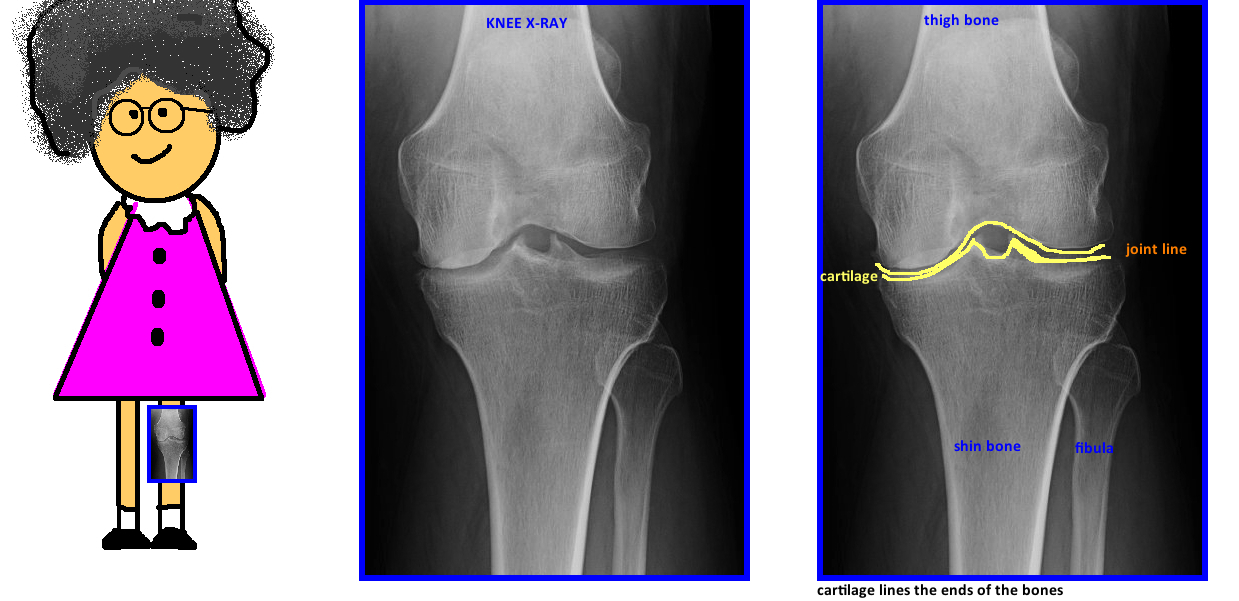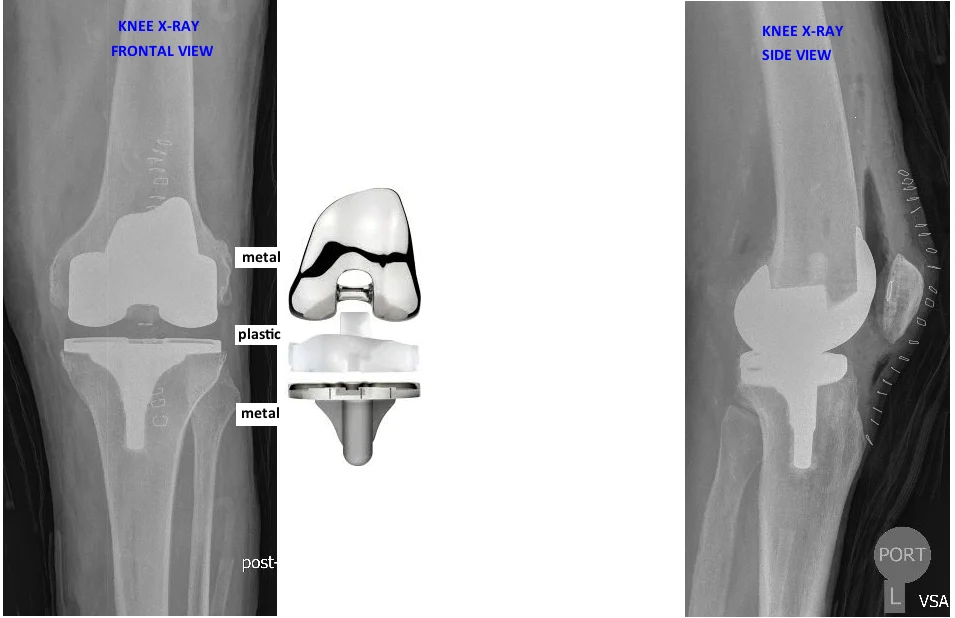KNEE REPLACEMENT
our website is for educational purposes only. the information provided is not a substitution for seeing a medical doctor. for the treatment of a medical condition, see your doctor. we update the site frequently but medicine also changes frequently. thus the information on this site may not be current or accurate.
What causes Knee Arthritis?
How do we get to needing a knee replacement?
Our joints are all lined with cartilage. The cartilage is so slippery that its co-efficient of friction is less than ice gliding on ice. This smooth gliding is essential for our daily motion. Without cartilage the knee cannot glide smoothly, it generates a lot of friction, and this causes inflammation. Arthritis is the inflammation of a joint, typically caused by the loss of cartilage.
So basically cartilage is great, except for one not so tiny detail. Cartilage is incredibly sensitive and once its gone, it cannot grow back. That is different than your bone, if your bone breaks, it grows back, fills in the cracks and its as good as new. When cartilage is injured it dies and doesnt come back, its just replaced with scar tissue...and this is post-traumatic arthritis. When cartilage wears out with age...this is called osteoarthritis. When cartilage wears out from the stress of too much inflammation...this is called rheumatoid arthritis, or some other type of reactive arthritis.
The inability to restore normal cartilage is arguably the biggest problem facing orthopedics today.
How do you Diagnose Knee Arthritis?
Arthritis causes pain. The pain is worse with activity.
The diagnosis can be made with simple x-rays looking at the front and the side of the knee.
The x-ray will show loss of cartilage via a "narrow joint space".
What is a Knee Replacement?
A knee replacement, also known as a Total Knee Arthroplasty, is a surgical procedure that replaces the cartilage in a painful arthritic knee with metal and plastic.
A surgeon shaves the ends of the bones to match the shape of the knee replacement.
The knee replacement is like a cap on the ends of the bones, almost like putting a cap on a tooth.
What is the long term outcome?
There is a lot of variability in how long a knee replacement will last. The metal and plastic has a certain lifespan inside your body. However, this lifespan is also affected by a persons activity level (the plastic wears out faster in more active people), and by the skill of your surgeon. The prosthetic parts need to be inserted in great alignment so that it wears out evenly, and that too much stress isnt placed on one part of the prosthetic. The replacement is like a chain: only as good as its weakest link. If one part wears out too fast, the whole thing will become painful and require a replacement of the replacement.
The average lifespan of models placed within the last two or three decades is about 15-20 years. If everything was done correctly.
The good news is that things are only getting better. Newer materials are being developed that has a longer shelf life. The plastic that is used to make the hip socket has been reinforced in a process called "cross-linking" which makes it more resistant to wearing out. Most companies that make these implants say that the average knee replacement should last 30 years.
Surgeons are also becoming more skilled at performing this surgery, and technologies like computer-navigation, help align each of the implants to achieve a near perfect match with a persons normal anatomy. Other technologies have been developed to create custom implants based on a 3D model of your bone taken from an MRI (or CAT scan).
One of the biggest issues that orthopedic surgeons are now facing is that people are asking for replacements at a much younger age than just a decade ago. This procedure has been so successful at alleviating pain and allowing people to return to an active lifestyle, that many people dont want to wait until they are in their 60s to get a knee replacement. This younger age group (people in their 50s) pose a whole new challenge to surgeons and engineers. People at this age are considerably more active and put greater stresses on their new hips. People are also living longer, they are outliving their hip replacements. Now I know, its a good thing that people are living long healthy lives, but it means that even when a very successful hip replacement lasts 30 years (which is a long time), the replacement will need replacement. This is called a revision surgery and is considerably more complex then putting in the first replacement.



